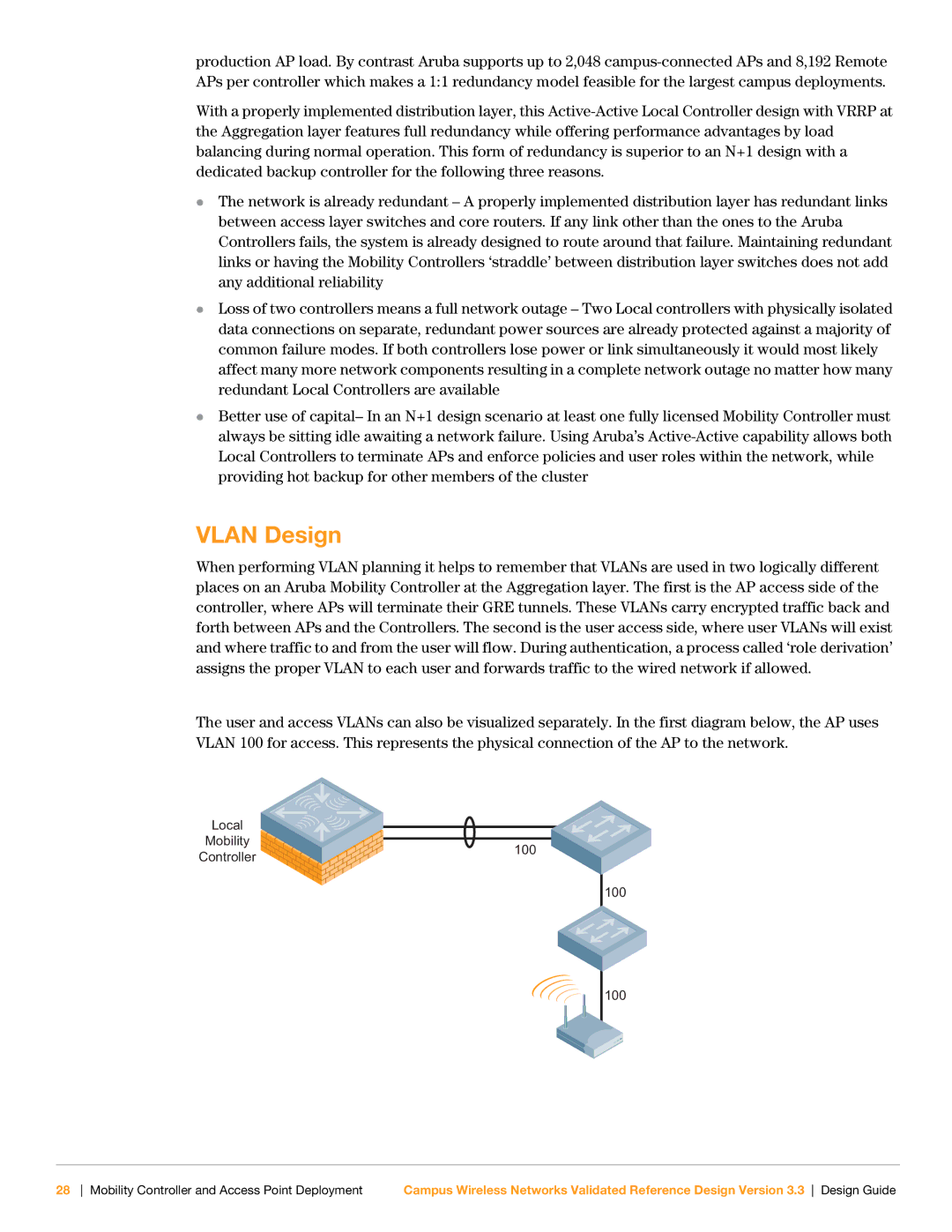
production AP load. By contrast Aruba supports up to 2,048
With a properly implemented distribution layer, this
zThe network is already redundant – A properly implemented distribution layer has redundant links between access layer switches and core routers. If any link other than the ones to the Aruba Controllers fails, the system is already designed to route around that failure. Maintaining redundant links or having the Mobility Controllers ‘straddle’ between distribution layer switches does not add any additional reliability
zLoss of two controllers means a full network outage – Two Local controllers with physically isolated data connections on separate, redundant power sources are already protected against a majority of common failure modes. If both controllers lose power or link simultaneously it would most likely affect many more network components resulting in a complete network outage no matter how many redundant Local Controllers are available
zBetter use of capital– In an N+1 design scenario at least one fully licensed Mobility Controller must always be sitting idle awaiting a network failure. Using Aruba’s
VLAN Design
When performing VLAN planning it helps to remember that VLANs are used in two logically different places on an Aruba Mobility Controller at the Aggregation layer. The first is the AP access side of the controller, where APs will terminate their GRE tunnels. These VLANs carry encrypted traffic back and forth between APs and the Controllers. The second is the user access side, where user VLANs will exist and where traffic to and from the user will flow. During authentication, a process called ‘role derivation’ assigns the proper VLAN to each user and forwards traffic to the wired network if allowed.
The user and access VLANs can also be visualized separately. In the first diagram below, the AP uses VLAN 100 for access. This represents the physical connection of the AP to the network.
Local |
| |
Mobility | 100 | |
Controller | ||
|
100
100
28 Mobility Controller and Access Point Deployment | Campus Wireless Networks Validated Reference Design Version 3.3 Design Guide |
